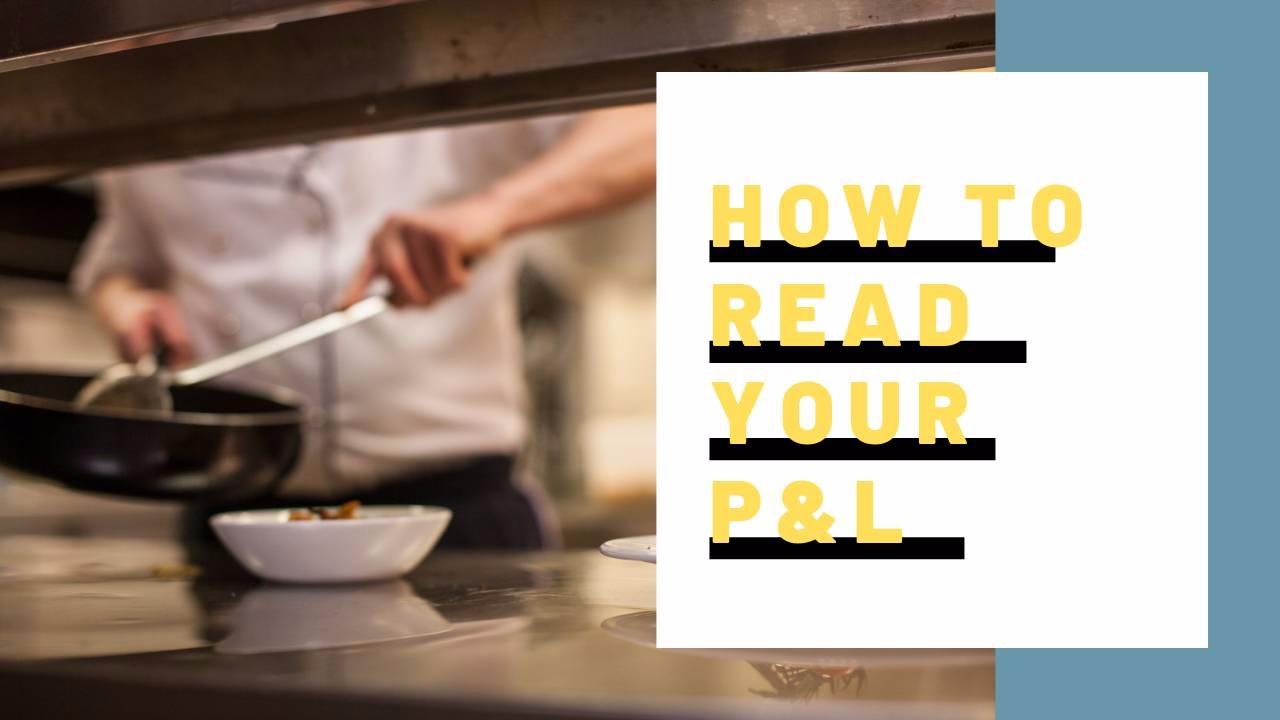Why a Restaurant Profit and Loss Statement Is Important
Sep 30, 2019
Have you ever wondered what a restaurant profit and loss statement is and why it's important to your restaurant business? Watch this video, or continue reading below, to find out.
Let’s make an assumption that you take a picture of the business (a balance sheet) on the last day of each month. That picture has changed from one photo to the next. Things happened to make those pictures change; deliveries were accepted at the back door, customers came and purchased your products, people worked and were paid, and so on. A profit and loss statement (P&L) is like a movie showing all of those things happening on a daily basis. Simply put, a P&L is a moving picture or movie that shows everything that went on in your restaurant between the times you took the photos.
You get your P&L statement, flip to the end to see how much you've made or lose, and say, "Oh, crap." What does it mean to you? Have you ever combed through it to see if it's accurate? Does it make sense to you? Why is your profit and loss statement important to your restaurant business?
It's important to know that your P&L is accurate because it is how you run your business. It is your report card for your restaurant business. Do you want an "A" or an "F" in your business? The only way to make sure your profit and loss statement is accurate - that it really showed what happened between two points in time - is to:
- Have a good chart of accounts
I've seen a variety of chart of accounts for independent restaurants, and I can't tell what is included in any of the numbers. When I ask these restaurant operators what the number means, most of them tell me, "I don't know. I need to call my accountant." WRONG! If you don't know what every number is in every chart of accounts category, how do you know it's accurate. It's not. You need to tell you CPA, your bookkeeper what should go in each of those chart of accounts.
- Have the right chart of accounts
Is it split up properly? You can't have food and beverage when it comes to your sales categories. You have to have food, N/A bev, bottle beer, draft beer, wine, liquor so you know where your sales trends are and to track your cost of goods sold. Each category has their own cost of goods sold target. You have to use the right numbers - you have bottle beer COGS, it can't be divided into total sales, but it gets divided into category sales. If you mix up these numbers, your pour cost won't be right.
- Have a budget
That which you measured improves. Your restaurant budget is a plan for success that you can measure against your profit and loss statement to determine if you hit or missed your budget and what changes you can make.
- Have timely and accurate numbers
Your accounting firm needs to tie out your balance sheet. They should make sure each of the categories - or accounts - on your balance sheet has been reconciled, then your bottom line is right. You're paying the right sales tax, you're paying the right income tax, you know your profit and loss statement is accurate.
If you have an accurate profit and loss statement, and you understand it, you can take your restaurant business to the next level and make more money in your restaurant.
If you'd like to learn what successful restaurant owners know about accounting, download our free report, "How to Avoid the 5 Pitfalls of Restaurant Accounting." Or watch this webinar on The Largo Group's own restaurant industry expert David Scott Peters' YouTube channel.
Stay connected with news and updates!
Join our mailing list to receive the latest news and updates from our team.
Don't worry, your information will not be shared.
We hate SPAM. We will never sell your information, for any reason.
